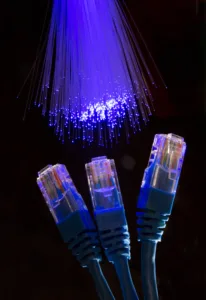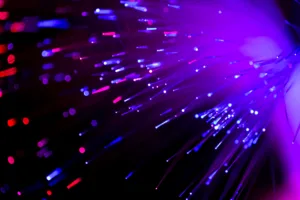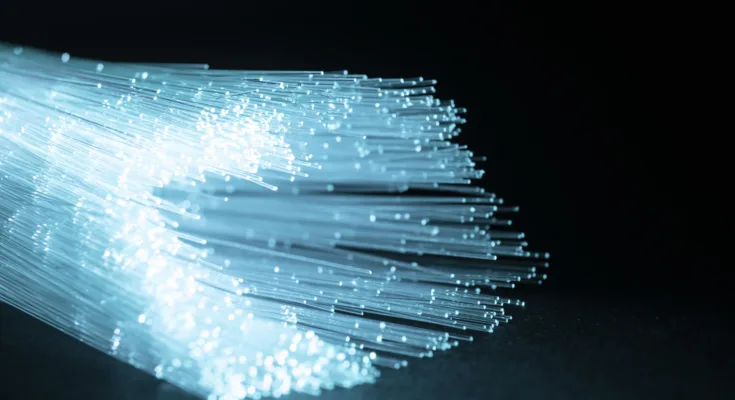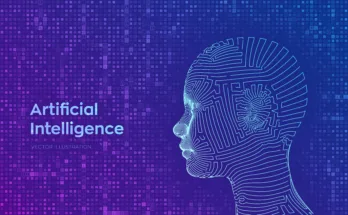In the present digital era where connectivity and communication reign supreme, optical fibre acts as a symbol of innovation. Optical fibre has completely changed not only how information is transferred but also the world of telecommunications, internet connections and many more. Optical fibre is used to power global networks as well as provide high-speed internet in homes, among other applications. In this paper, we talk about the uses and importance of optical fibre nowadays in our societies addressing general questions regarding its implementation.
The Evolution of Optical Fibre
Optical fiber has its origin as far back as the mid-20th century and is a thin, flexible strand of glass or plastic which can transmit light signals. The early experiments with light transmission through glass fibers paved the way for one of the pillars of modern telecommunications. The breakthrough was born in the 1970s with improvements made to materials and manufacturing techniques that resulted in low-loss optical fibres heralding a new era for communication technology.

Applications of Optical Fibre
Telecommunications
Optical fibre is probably best known for its use in telecommunications. Optical fibres provide the infrastructure for worldwide communication along which massive amounts of data are carried over long distances with a negligible level of signal distortion. Whether it is voice calls, video conferencing or browsing the internet; optical fibre networks are an integral part in ensuring that the world remains connected.
Internet Connectivity
In a world where high speed internet access is not an option, optical fibre has become the default choice for broadband connections. Fibre-to-the-home (FTTH) or fibre to the premises (FTTP) deployments have become quite prevalent, providing subscribers with high speeds and unprecedented stability.
Cable Television
Optical fibre has also transformed the cable television sector. Fibre-optic cables provide for the transmission of high definition video and audio signals, giving consumers an immersive viewing experience. With the help of optical fibre networks, cable providers are able to provide subscribers with numerous channels and on-demand content.
Medical Imaging and Sensing
Apart from telecommunications, the optical fibre is applied in other spheres of life such as medicine. Fibre-optic probes permit endoscopy and laparoscopy, minimally invasive procedures that enable physicians to view internal organs with unparalleled acuity. Optical fibre sensors are also used in the healthcare industry for monitoring vital signs and detecting anomalies.
Industrial and Military Applications
Industrial and military applications demand optical fibre’s ability to withstand damage, freedom from electromagnetic interference, and high bandwidth. It is used in drastic environments for sensing, monitoring and data transmission which helps to have efficiency and safety.
Conclusion
The wide scale implementation of optical fibre has brought a new age of connectivity, completely revolutionizing our way of communication and doing business. Right from powering global telecommunications networks to making available high speed internet access in homes, the optical fiber continues to redefine how far communication technology can go. Being in the digital era, the role of optical fibre as a catalyst for change cannot be over emphasized. It incredible adaptability, consistency and unmatched performance make it a necessary instrument in today’s globally linked society.

FAQs
Q: What mode of transmission is used by the optical fibre in order to carry data?
A: Optical fibre carries data by sending light wave signals. These signals proceeds away via the middle of the fibre, where it is largely composed of glass or even plastic. Total internal reflection reduces the degree of leakage, and every ray is directed back into the core.Consequently, light always remains in the core when transmitting over long distances
Q: The benefits of optical fibre are in comparision with ordinary copper conductors.
A: As compared to copper cables, optical fibre provides a number of benefits such as high capacity with several miles rather than feet within the limitations of standard hundreds and thousands MHz. Besides that, other useful features optic fibre has include higher bandwidth along with far quicker rate of data transmission, better protection from electromagnetic interference which is known in contrary as EMI;as well distant Optical cable has also higher tensile strength and can withstand small revolution creating vibrations.
Q: Does fiber optics easily damage?
A: Although optical fiber has a fairly high level of contrivance that is, it can withstand bending; stretching and crushing under pressure as well. Such on degrees of damage must be avoided, through the development and using certain measures during installation and maintenance (associated with it). The optical fibre cables can be defended through protective measures such as conduit or cable trays in order to protect from external harm.
Q: Can the optical fibre be used as a wireless communication system?
A: Optical fibre, which is far from being applicable for wireless communication as such and forms the basis of most optical network services today. The connection between the point-of-presence and optical fibre links helps that the wireless communication infrastructure, such as cellular networks and Wi-Fi hotspots, can operate effectively over their efficient bandwidth.
Q: Optical fibre offers consideration to the environment in which it is used
A: The optical fibre has these environmental advantages over its old counterpart; the copper cables. Lower carbon dioxide emissions are apparent since energy is used in lesser proportion during the transmission. Moreover, the durability and weather resistance associated with optical fibers can ensure infrequent replacements minimizing its impacts on parties around it.




